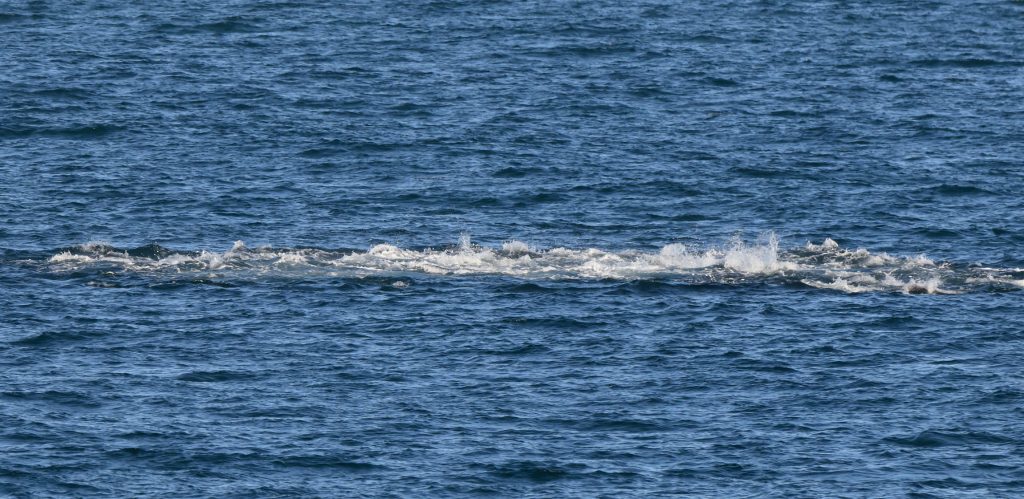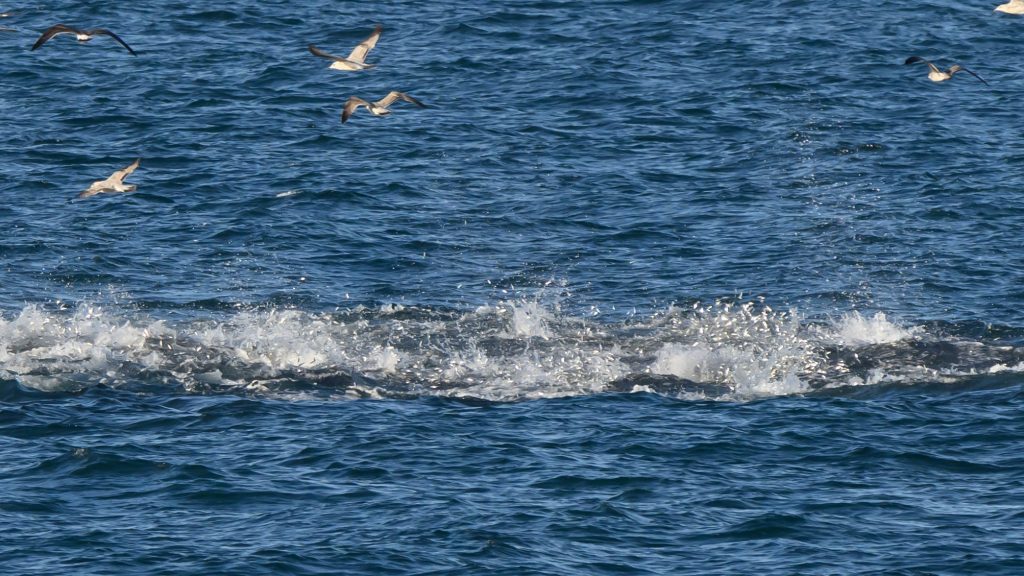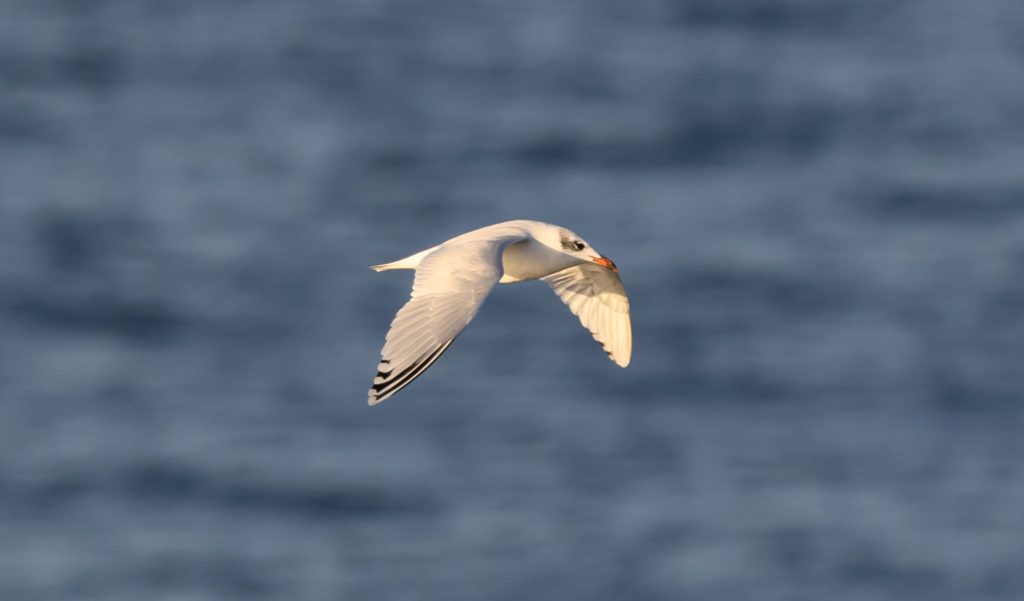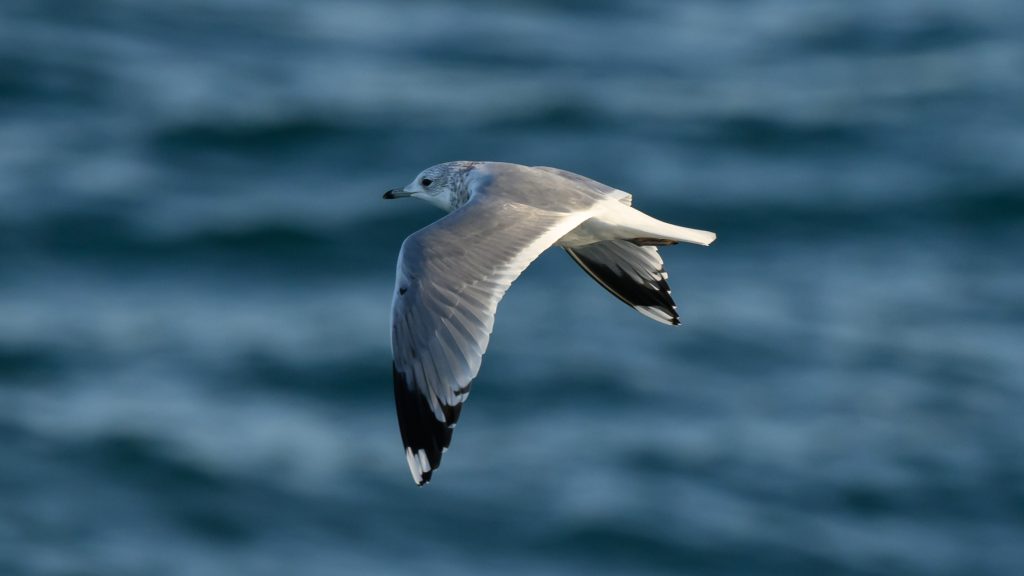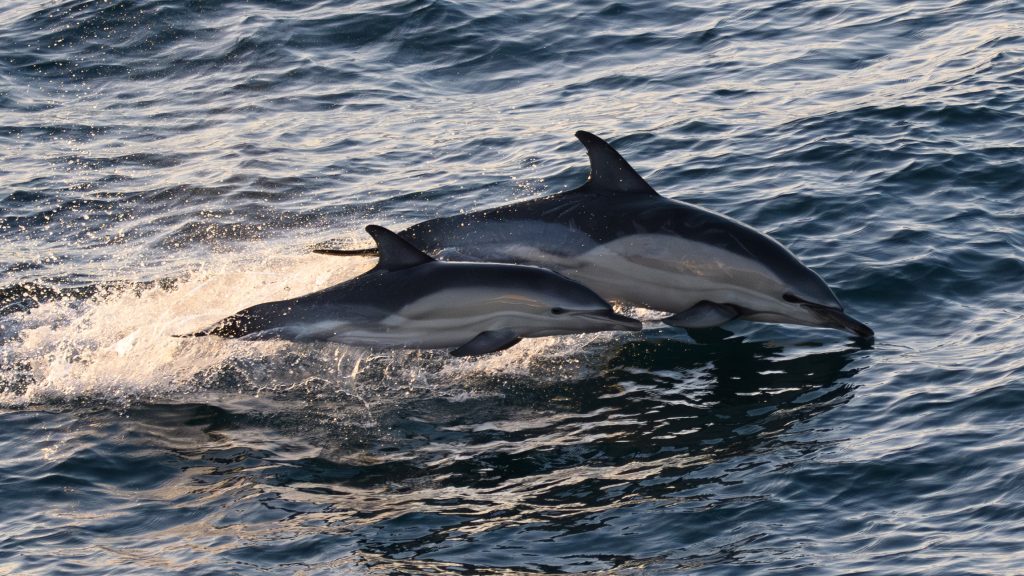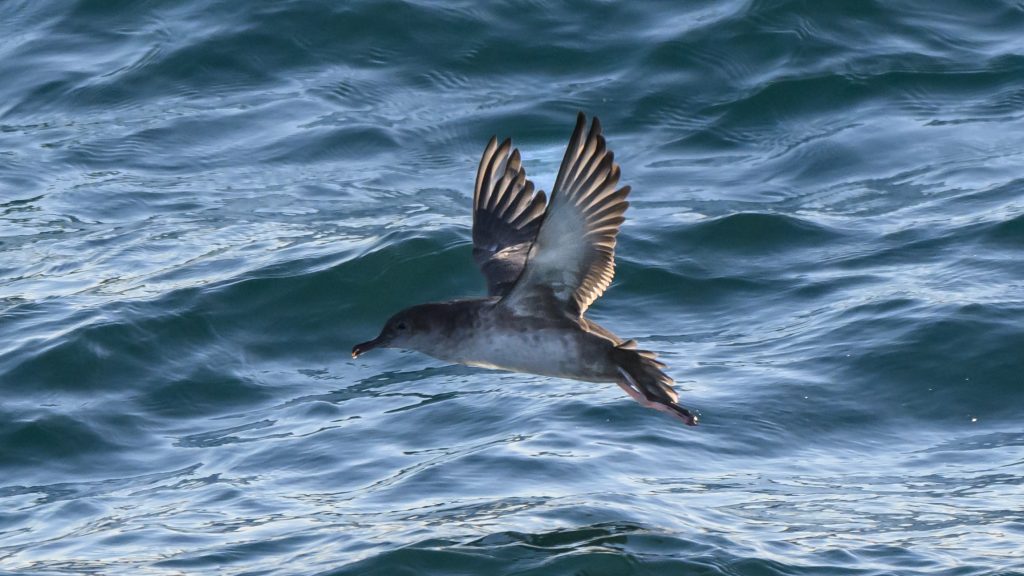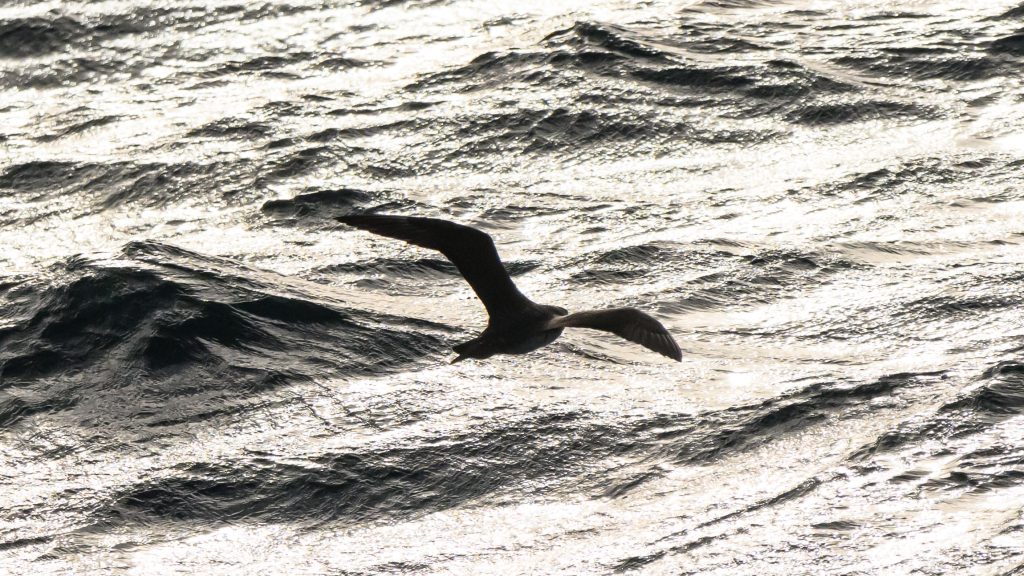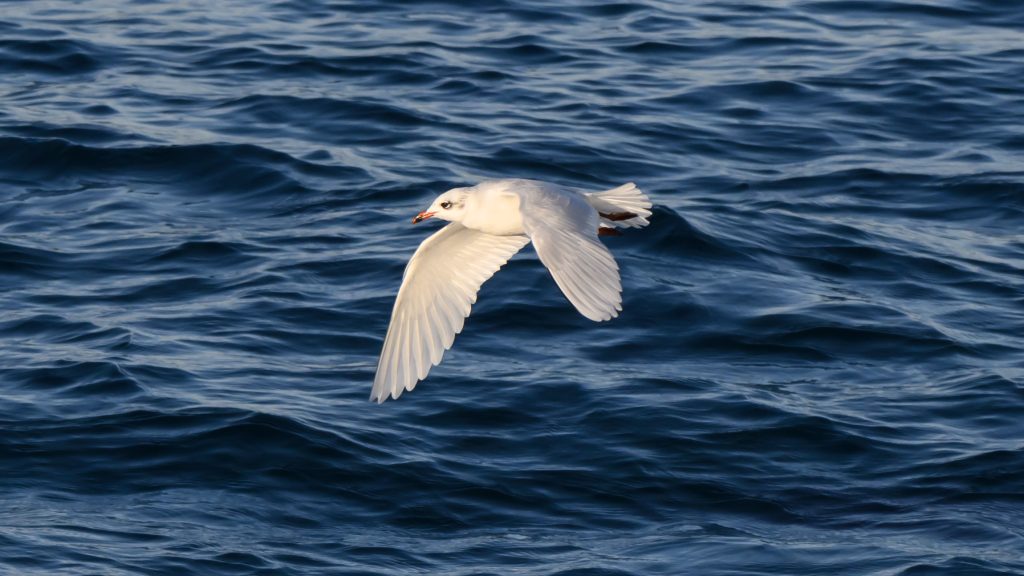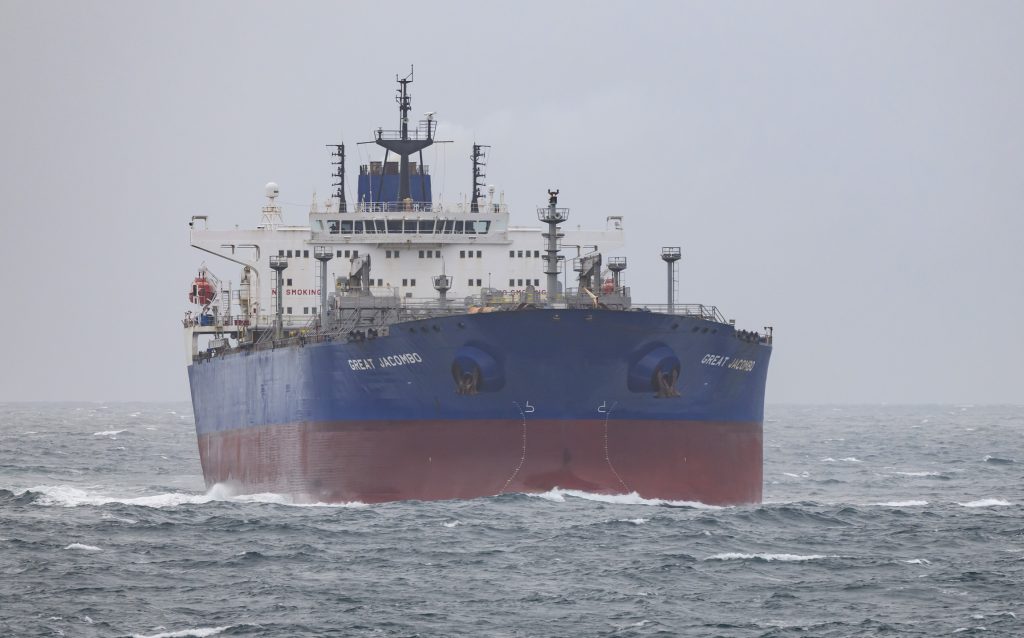 Peltic 2024: 27-28 October
Peltic 2024: 27-28 October
28 October 2024
27th – Day of the tuna feeding frenzies
We rejoined where we’d left off yesterday, about 50km south of Exmouth (photo 1) and in glorious conditions, clear skies, sea state three and excellent visibility. There were birds around from the start with small numbers of Kittiwakes, Gannets, Manx Shearwaters and other gulls. If you looked ahead through binoculars, you could see birds all over the place – it could be a busy morning.
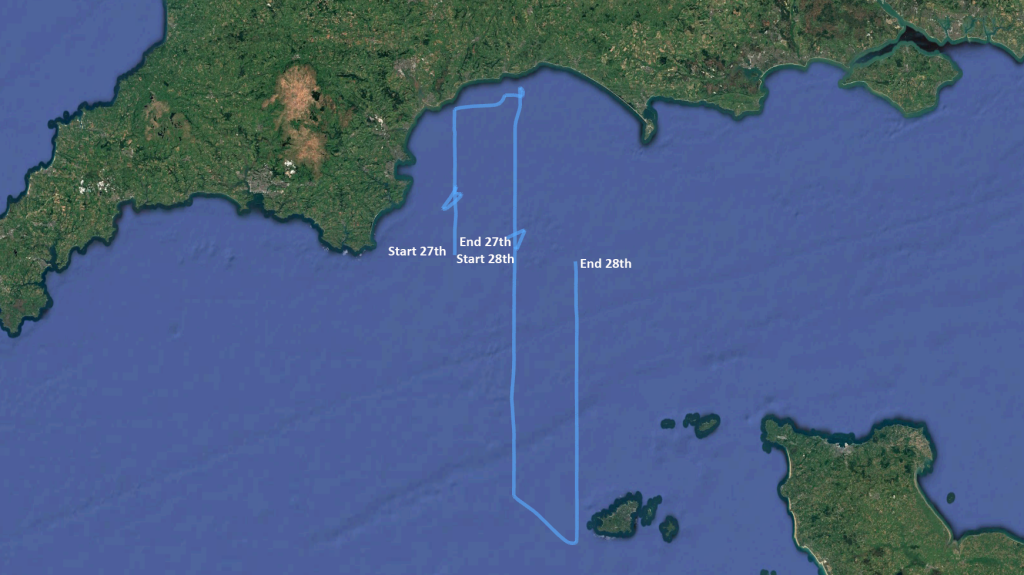
After about 40 minutes a large tuna feeding frenzy appeared about two kilometres ahead of us, it was easily visible to the naked eye even at that distance as it spanned perhaps 2-300m (photo 2). It carried on as we approached and at about 5-600m from the ship we could clearly estimate the numbers of birds feeding around it. There were several hundred gulls – mainly Herring – but Gannets and Kittiwakes appeared to be in relatively low numbers, which was a little surprising (photo 3).
We’ve been seeing tuna on Peltic surveys since 2017; however, this is the first time since then that we’ve seen a large, long-lasting, frenzies like this. Most times we have just seen individual fish feeding or small numbers thrashing about for a couple of minutes. This frenzy had been going for more than five minutes.
We broke off survey for a trawl and, as we headed off to get into position, another frenzy started up (photo 4). We passed close by and looking at photos it is obvious why birds are attracted to the frenzies, in one (photo 5) you can see large numbers of small fish leaping out of the water in an effort to escape the tuna, only to be grabbed by some passing bird – if there’d been that many. A lucky grabbed shot shows a tuna surging through the water, mouth open, as it closed in on its prey (photo 6).
As we continued with the transect it was good to see a decent number of Kittiwakes (despite them not being around the frenzies), not too surprising as the western side of Lyme Bay is traditionally a good area for them. What was missing though was the rafts of auks, particularly Guillemots. With the calm seas spotting auks was easy and there just weren’t that many around.
Lyme Bay is also good for Mediterranean and Common Gulls, and we did very well for both logging 23 and 19 respectively (photos 7 & 8).
Despite the calm sea conditions, we still couldn’t find any Harbour Porpoise, a real surprise as they should be pretty common in the Bay. We did manage a few sightings of Common Dolphins, although all the pods were small, there were occasional youngsters amongst them (photo 9 by Sam Barnett).
Late afternoon a Starling suddenly appeared on board (photo 10), it’s not often we pick up passerine passengers during the day, especially in bright and clear weather like today. We ended the day with a trawl and more sightings of large tuna feeding frenzies, they really had been the highlight of the day.
28th
Unfortunately, the weather forecasts weren’t that accurate, especially regarding the wind speed (nothing new there). We got to the bridge just before dawn to find the wind was 25-30 knots, rather than the 15-20 forecast, with four hours left to run on this transect it was going to be a long and choppy day. It didn’t help that the wind was from the SW, and we were heading south meaning that spray was a bit of an issue.
Birds were few and far between, only 61 recorded in the four hours, we did at least manage three Balearic Shearwaters (photo 11 – from a couple of days ago) and an adult Arctic Skua (photo 12). We also picked up our first Stock Dove of the year too (photo 13), perhaps fitting given we’d seen so many Wood Pigeons the other day. It looked a little wind blown and didn’t stay long before heading on its way.
As has happened so many times over the years on this survey, the best birds waited to show up when we’re moving between transects and the birds aren’t recorded. We came across three different feeding groups of birds as we made the crossing, between them there was at least 70 Balearic Shearwaters, part of a flock is in photo 14.
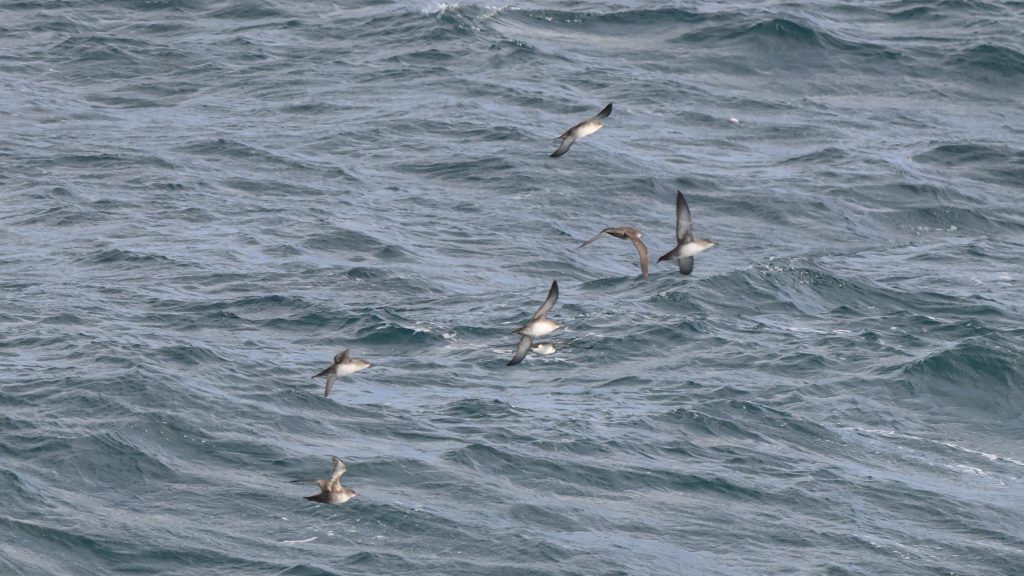
We started the next transect off the SW corner of Guernsey with the Hanois lighthouse sitting on its jagged rocks off the extreme corner (photo 15). Of course, having seen all those Balearics between transects there wasn’t one to be seen in the four hours we surveyed. There were at least some more Mediterranean Gulls to be seen (photo 16), these lovely gulls have increased in numbers in the UK over the past 20-30 years and are now fairly numerous, even so the 30 seen this afternoon was still a good count for the Peltic.
As we crossed the traffic separation scheme, two shipping lanes with east-bound traffic in the southerly lane and west-bound in the northern, one ship left it a little late to alter course which meant it was a little closer than normal (photo 17) – not remotely dangerous, just closer than good seamanship might dictate.
The day ended with dreary, overcast conditions with occasional drizzle and fog banks, with visibility down to 500m at times. Not a good way to end what had been a long and tiring day. Forecast is for lighter winds tomorrow – I hope they’re right.
Summary of sightings
Seabirds
Arctic Skua 2
Auk sp. 82
Balearic Shearwater 4
Black-headed Gull 11
Common Gull 26
Gannet 256
Great Black-backed Gull 18
Great Shearwater 1
Great Skua 14
Guillemot 284
Gull sp. 117
Herring Gull 322
Kittiwake 685
Larus sp. 1
Lesser Black-backed Gull 64
Manx Shearwater 23
Mediterranean Gull 59
Puffin 2
Razorbill 23
Sooty Shearwater 2
Storm Petrel 5
Terrestrial Birds
Starling 1
Stock Dove 1
Sky Lark 1
Marine Mammals
Common Dolphin 84
Tuna 379



